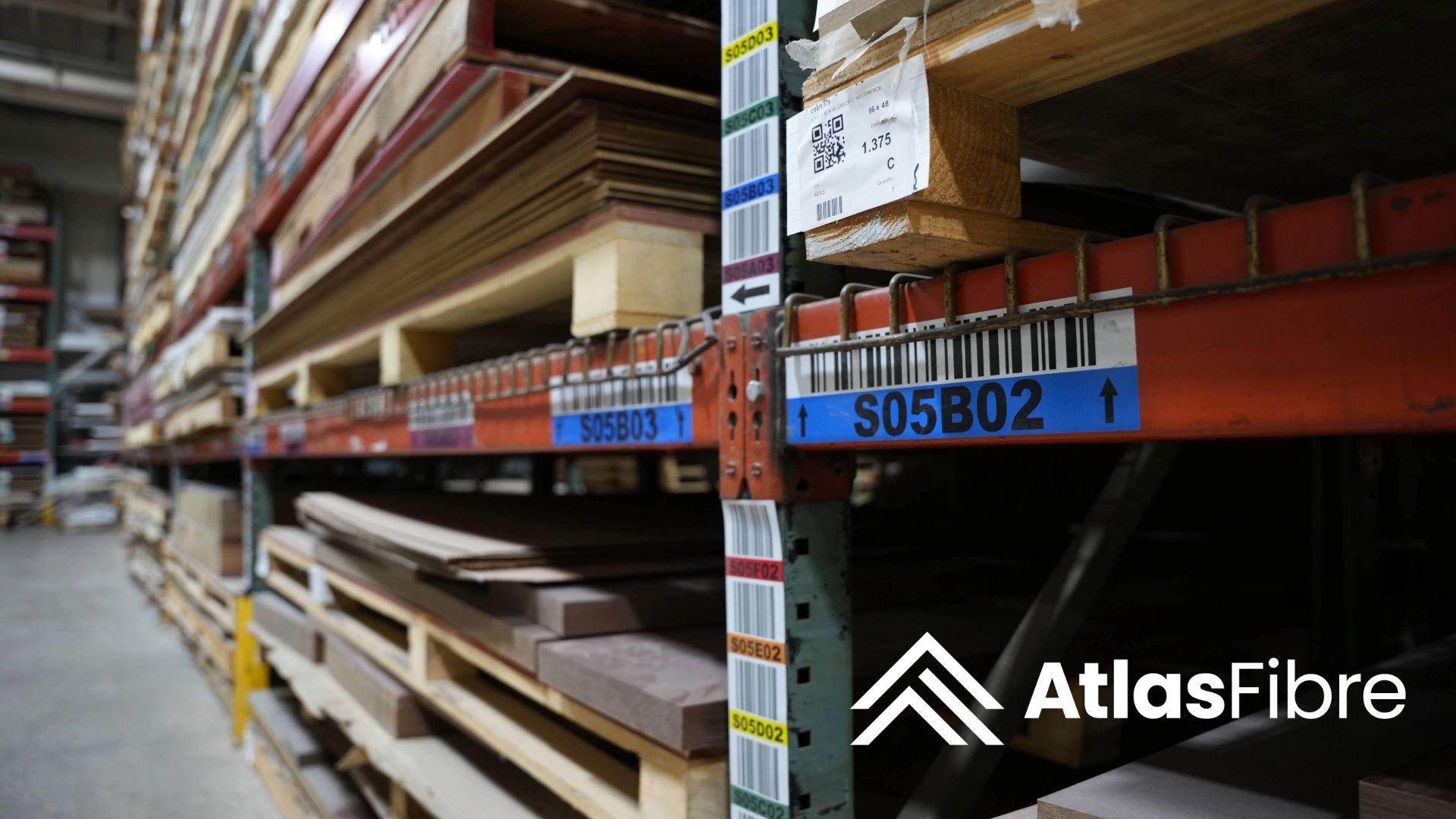
Effective warehouse management is crucial for ensuring timely and accurate order fulfillment. Without a structured approach, employees can struggle to locate items, leading to delays and inefficiencies.
Optimizing warehouse operations involves more than simply maximizing storage space; it requires a strategic approach to organization throughout the experience that enhances both speed and accuracy in order processing.
Discover some of the steps we have implemented to achieve this:
Beyond the ABC’s of Warehouse Organization
While categorizing inventory into A (high-demand), B (moderate-demand), and C (low-demand) items is simple and straightforward, we take it a step further at Atlas Fibre.
Over the past 12 months, our entire inventory system has been reorganized based on product types and frequency of retrieval. High-demand items like our sheet, rods and tube are stored in easily accessible locations, reducing the time our team spends locating the right material products. Additionally, high demand items are stored closest to the shipping area for quicker access and storage.
Optimized Layout and Flow
Designing the warehouse layout in a U-shape or straight-line flow is a highly effective way to minimize the distance between receiving, stocking, picking, and shipping areas. Frequently accessed items are strategically placed nearest the shipping docks, streamlining the entire process and making sure that orders go out on time, every time.
Utilizing Vertical Space
To maximize vertical space and increase storage density, Atlas Fibre has also installed multi-level racking, creating multiple levels of shelving or storage platforms within a single row. This approach to warehouse organization allows for increased storage density without expanding the facility’s physical footprint. This approach optimizes space and makes use of previously underutilized areas.
Labeling and Organizing Clearly
Implementing clear labeling systems with barcodes, colors, and signage makes identifying product locations, aisles, and zones effortless and has been an effective way to improve warehouse organization at Atlas Fibre. Grouping similar or related items together further enhances the efficiency of our warehouse operations.
Efficient Picking Methods
Atlas Fibre employs highly efficient order picking methods to ensure optimal workflow and customer satisfaction. By integrating a range of advanced automated technologies, such as automated storage and retrieval systems (AS/RS) and sophisticated warehouse management and order tracking software, we significantly enhance the speed and accuracy of our order fulfillment process.

These innovations not only reduce human error and labor costs but also allow us to process and ship orders faster than ever before, ensuring timely delivery and superior service for our customers. This commitment to efficiency and technological advancement underscores Atlas Fibre’s dedication to excellence in every aspect of our operations.
Maintain and Organize
Regular cycle counts, equipment maintenance, decluttering workstations, and keeping aisles clear are essential practices we follow to ensure efficient material handling and movement.
By implementing strategies like these, we significantly improve warehouse organization, optimize space utilization, reduce travel times, and boost overall operational efficiency. An organized warehouse is not just about neatness; it’s about creating a streamlined, efficient environment where every step is designed to maximize productivity and accuracy.
Do you have additional questions about Atlas Fibre’s approach to warehouse organization and the impact it has on order delivery speeds? Get in touch to learn more!
